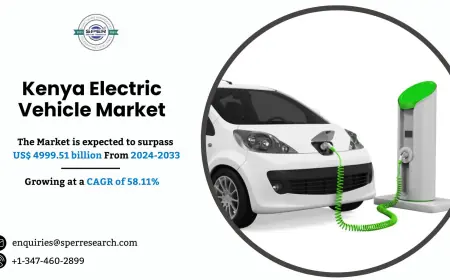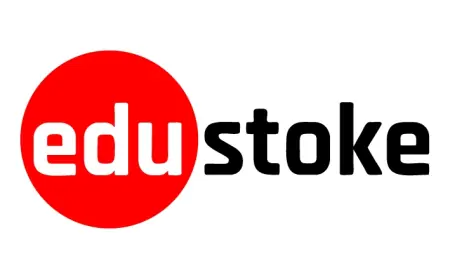Japan Internet of Things Market 2030: Research Report Highlights Market Size & CAGR
The Japan Internet of Things (IoT) market stands poised for extraordinary transformation. As highlighted in the “Japan Internet of Things Market – By Region, Competition, Forecast and Opportunities, 2020–2030F” report by TechSci Research, the market is projected to grow at a compound annual growth rate (CAGR) of 16.16% over the forecast period. Fueled by revolutionary advances in industrial automation, smart manufacturing, 5G implementation, and government-led initiatives, the IoT ecosystem in Japan is laying the foundation for a hyper-connected, intelligent future.
Request For Sample Copy of Report For More Detailed Market insight: https://www.techsciresearch.com/sample-report.aspx?cid=24696#requestform
This comprehensive analysis spans multiple dimensions of the market: industry highlights, current and future trends, fundamental growth drivers, competitive landscape, growth prospects, and the invaluable advantages of this research. Each section is crafted in a professional voice, infused with creative storytelling to convey both strategic insight and technological vision.
Industry Key Highlights
1. Rapid Market Expansion & Stable Growth
Japan’s IoT market is expanding at a noteworthy pace—driven by a national ecosystem that values innovation, industrial efficiency, and public-private collaboration.
2. Industrial IoT (IIoT): The Core Engine
Rooted strongly in Japan's manufacturing and industrial sectors, IoT solutions—ranging from smart robotics to sensor networks—form the backbone of market expansion.
3. Dominance of Device Management Platforms
In 2024, Device Management led platform market share, reflecting the urgent need for seamless provisioning, configuration, security, and operation of IoT assets.
Browse over XX Market data Figures spread through XX Pages and an in-depth TOC on " Japan Internet of Things Market.” @https://www.techsciresearch.com/report/japan-internet-of-things-market/24696.html
4. Expanding Platform Segmentation
-
Network Management: Ensures connectivity robustness across wired/wireless architectures.
-
Application Management: Manages analytics, dashboards, and digital services.
-
Device Management: The fastest-growing category, critical for scale and reliability.
5. Diverse Component Mix
Services, software, and hardware all play key roles, with system integrators constructing vertical IoT use cases—especially in manufacturing, smart mobility, logistics, retail, and home automation.
6. Broad Application Spectrum
IoT use cases span consumer electronics, transportation, intelligent infrastructure, healthcare, retail, logistics, and enterprise automation.
7. Strong Governmental Backing
Public initiatives, funding, and regulatory alignment in 5G rollout and smart-city testing are propelling broad-based adoption.
8. Competitive Ecosystem
Major players include IBM, Cisco, Microsoft, Intel, Siemens, GE, Oracle, SAP, Honeywell, and Schneider Electric—each offering distinct value across hardware, software, and end-to-end integration.
Emerging Trends
Trend 1: Industrial Automation → Smart Factories
Next-generation smart factories are integrating sensors, cameras, embedded AI, and robotics to enable predictive maintenance, just-in-time manufacturing, and digital supply chains—driving a second wave of productivity in Japan’s industrial heartland.
Trend 2: Device Management Sprawl
The explosion of connected devices—ranging from smart meters and environmental sensors to wearables and autonomous vehicles—demands robust centralized provisioning, monitoring, and firmware management, emerging as a central focal point in 2024.
Trend 3: 5G-Enabled Connectivity
Commercial 5G rollouts are boosting IoT with low-latency, high-bandwidth connectivity essential for mobile robotics, autonomous vehicles, real-time asset tracking, and AR/VR-powered maintenance.
Trend 4: Industry-Vertical Solutions
Verticalization is gaining traction through domain-specific IoT solutions—like connected locomotives, smart hospital infrastructure, intelligent logistics hubs, and smart retail spaces tailored for Japanese enterprises.
Trend 5: Edge + Cloud Hybrid Architectures
Moving intelligence to the edge (manufacturing floor, city traffic controllers, smart meters) reduces latency while centralized cloud analytics enables cross-site AI-driven insights.
Trend 6: Enhanced Security, Regulation & Compliance
Stringent data protection—aligned with APPI and critical infrastructure directives—has elevated encryption, authentication, and secure boot processes within device management and platform services.
Trend 7: Open Architecture & Interoperability Push
Japan’s public-private testbeds emphasize standards like OPC UA, MQTT, and LwM2M—ensuring devices from multiple vendors can work together seamlessly.
Trend 8: AI/ML-Powered Predictive Operation
AI engines are augmenting sensor data for forecasting machine failures, optimizing energy use, and automating inspection processes with image recognition.
Trend 9: Integration of IoT with Blockchain
Blockchain is enabling secure, auditable IoT data trails—especially in pharma manufacturing, food safety, and multi-party logistics.
Trend 10: Environmental & Sustainability IoT
Smart grids, intelligent water meters, waste capture sensors, and air-quality monitoring solutions reflect Japan’s commitment to green technology.
Key Market Drivers
Driver 1: Industrial Automation & Manufacturing Excellence
Japan’s manufacturing is globally renowned. IoT tech—such as robotics, plant sensors, real-time analytics, and predictive maintenance—propels productivity, efficiency, and competitiveness in sectors like automotive, electronics, heavy machinery, and pharmaceuticals.
Driver 2: Smart Cities & Infrastructure Development
Municipal innovation in urban mobility, energy grids, and environmental monitoring rely on IoT nodes to collect data and optimize public services.
Driver 3: Healthcare Digitalization
Hospital IoT—covering asset tracking, remote monitoring, and elder care—is accelerating due to workforce challenges and an aging population.
Driver 4: Mobility & Transportation
Connected fleets, vehicle diagnostics, smart logistics, lidar-driven robotics, and passenger-tracking solutions are scaling across Japan’s transport ecosystem.
Driver 5: Government Programs & 5G Strategy
The “5G & Beyond” plan and Smart City pilots fund IoT R&D and incentivize early trials across sectors such as agriculture, emergency services, and mass transit.
Driver 6: Supply Chain Optimization
IoT-driven inventory, container tracking, and logistics oversight are being adopted to combat rising global demand.
Driver 7: Demand for Data-Driven Decision Making
Japanese enterprises are leveraging sensor intelligence and analytics to make data-informed choices—ranging from energy optimization to workflow automation.
Driver 8: Enterprise Digitization Push
Large firms are investing in IoT platforms as part of their Industry 4.0 strategies—linking shop-floor, supply-chain, CRM, ERP, and maintenance systems.
Driver 9: Hardware-Software Convergence
IoT hardware readily comes with embedded analytics, secure firmware, and API layers—spurring vertical-friendly use cases.
Driver 10: Focus on Risk Mitigation
Predictive maintenance cuts unplanned downtime, reduces liability exposure, and saves costs—especially in manufacturing and transportation sectors.
Competitive Analysis
IBM Corporation
-
Strengths: Strong in hybrid, secure architectures; industrial IoT with Maximo asset management; AI-infused Watson analytics.
-
Weaknesses: High cost and complexity for SME adoption.
Cisco Systems
-
Strengths: Dominates connectivity and edge infrastructure with secure networking, industrial switches, and Edge Fog computing.
-
Weaknesses: Heavy integration focus may delay time-to-deploy in low-tech firms.
Microsoft Corporation
-
Strengths: Azure IoT Suite, device provisioning, AI, and data lake integration with Office 365/Teams.
-
Weaknesses: Regulatory data residency and compliance may be limited in select verticals.
Intel Corporation
-
Strengths: Edge compute with high-performance embedded chips; partnerships in robotics and autonomous platforms.
-
Weaknesses: Dependent on software stack partners for completeness.
Siemens AG
-
Strengths: Leader in industrial automation, PLCs, digital twin platforms, and process control systems.
-
Weaknesses: Heavy industrial focus may miss lighter IoT deployment opportunities.
General Electric
-
Strengths: Asset-intensive IoT play with Predix AI and industrial-discrete analytics.
-
Weaknesses: Legacy system complexities and US-geopolitical hesitance.
Oracle Corporation
-
Strengths: Strong backend architecture for IoT analytics, SaaS integration, and PaaS scale.
-
Weaknesses: Narrowed footprint in network-edge realms.
SAP SE
-
Strengths: SAP Leonardo IoT tied to ERP, S/4HANA workflows, and manufacturing planning.
-
Weaknesses: Best-in-class verticals are lagging outside manufacturing.
Honeywell International
-
Strengths: Industry-level automation, building controls, and aerospace sensor integration.
-
Weaknesses: Serving niche regulated environments more than mass-market IoT.
Schneider Electric
-
Strengths: Power and energy IoT leadership with EcoStruxure platform—covering buildings, grids, microgrids, and data centers.
-
Weaknesses: Enterprise-wide digital platform adoption is still maturing.
Market Takeaways
-
Industrial sophistication and hybrid design matter.
-
Connectivity vendors (Cisco) are rising with edge-enabled frameworks.
-
Hyperscaler IoT duopolies (Microsoft, IBM) dominate but must tailor for local needs.
-
Sector specialists (Siemens, Schneider) outpace on vertical integration; hardware players (Intel) excel with micro-architecture capabilities.
Future Outlook: 2020–2030
Industrial Upscaling & Globalization
Japan’s factories will increasingly deploy sensor arrays, digital twins, and AI-driven supply chains, reinforcing Japan as a global manufacturing epicenter.
Edge-Cloud Fusion
Edge micro data centers will cooperate with centralized command points for low-latency control and unified analytics.
National IoT Interoperability Framework
Standardization pilots will drive protocol commonality and cross-sector data sharing.
Smart City Expansion
From pilot zones to full city deployments, Japan’s public IoT footprint will broaden—spanning intelligent lighting, traffic flow, air quality, and public safety systems.
Healthcare IoT Proliferation
Population aging will accelerate in-home care, remote vitals monitoring, and AI diagnostics via IoT platforms.
Autonomous Mobility
Connected vehicles and rail infrastructure will integrate with city traffic systems and telematics-based emergency services.
Cybersecurity Imperative
Adoption of zero-trust device frameworks, blockchain authentication, and hardware-based security modules will strengthen resilience.
Finance & Insurance Integration
Insurtech will harness IoT telemetry for usage-based risk assessment and dynamic policy creation—applicable in vehicle fleets and product warranties.
Environmental Monitoring Network
Large-scale deployment of sensors to track water, soil, air, and industrial waste—supporting sustainability goals.
SME Tech Democratization
SMEs will enjoy plug-and-play IoT kits, low-code platforms, and outcome-based service offerings to drive grassroots innovation.
10 Benefits of the Research Report
-
Comprehensive View
Multi-dimensional insights—segmented by platform, component, application, region, and enterprise class. -
Forecast Accuracy
10-year trend projection with a clear CAGR roadmap to 2030. -
Strategic Competitive Intelligence
Detailed competitor profiles enabling superior strategic planning. -
Emerging Trend Insight
Forecasts predict deployment of AI, 5G, edge architecture, and sector cloud innovation. -
Risk Assessment Tools
Identification of regulatory hurdles, data lifecycle risks, and integration complexity. -
Market Opportunity Mapping
Guidance through vertical breakout analysis and region-level hotspots. -
Controlled Budgeting & Investment Forecast
Financial models outline expected RoI and adoption timelines for different enterprise types. -
Real-Life Case Studies
Examples of smart factories, smart-city pilots, and healthcare automation provide replicable project structures. -
Customization & Flexible Deep-Dives
10% free customization to focus on specific sectors, use cases, or geographies. -
Strategic Road-Mapping
Enables stakeholders—including governments, vendors, and enterprises—to map technology and regulatory timelines in alignment with corporate strategy.
Customers can also request 10% free customization on this report.
Conclusion
Japan’s IoT future is vibrant, driven by strong industrial heritage, government backing, alliances between hyperscalers and local incumbents, and a rising demand for digital optimization. Accelerating at a 16.16% CAGR, Japan is laying the foundation for a smart, resilient, and competitive future across manufacturing, transportation, healthcare, and public services.
By examining the key themes—industry highlights, trends, drivers, competitiveness, forecasts, and report value—stakeholders are equipped to shape strategy, deploy at scale, and future-proof both infrastructure and operations.
Should you wish to explore sector-specific insights—such as detailed robotics integrations, AI predictive analytics deployments, smart-city planning, or healthcare IoT use cases—I would be glad to develop a tailored analysis.
Contact US:
Techsci Research LLC
420 Lexington Avenue, Suite 300,
New York, United States- 10170
Tel: +13322586602
What's Your Reaction?
 Like
0
Like
0
 Dislike
0
Dislike
0
 Love
0
Love
0
 Funny
0
Funny
0
 Angry
0
Angry
0
 Sad
0
Sad
0
 Wow
0
Wow
0




















































